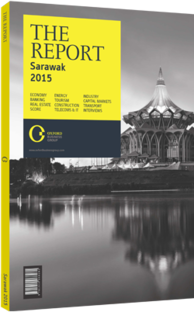Sarawak’s education sector gears up for a state-mandated English proficiency test
In the autumn of 2014, a learning programme was launched to beef up students’ English-language skills at 31 primary schools and two secondary schools, called the English Literacy Directions Programme for Secondary Schools and English Camp. A joint project of the Department of Education and the Sarawak Foundation, a state body in charge of educational quality, the camp is an early effort by educators to prepare students for an English proficiency test the federal government recently mandated for graduates of public universities. In preparation, universities are being urged to provide more English classes, starting earlier on.
The move has been hailed by parents, students and educators alike, including Universiti Malaysia Sarawak (UNIMAS) and Universiti Teknologi MARA (UiTM). Going further, the Sarawak Teachers Union has called for the re-instatement of English as the language of instruction in all of the state's schools. “It is vital for youngsters to have a solid English language base,” Jamil Hamali, rector of UiTM Sarawak, told OBG. “In preparing students for jobs in the private sector, this skill is very important for them to have the possibility of working in international environments.”
ROOM FOR IMPROVEMENT: The state has a ways to go. In the 2013 Lower Secondary Assessment taken by third-year secondary students, Sarawak recorded the nation's highest failure rate, with 24% failing the English paper. The scores prompted a debate in the state's legislature, with some representatives urging the state government to set up English-language schools.
Sarawak’s chief minister, Adenan Satem, also weighed in on the subject, telling an education symposium in September 2014 that he favours the use of English in teaching science and mathematics, given “the dominance and overwhelming presence of the English language in the world's scientific community”.
Yet gaining proficiency in any foreign language can take years, and many are calling for English to be stressed more in primary and elementary school so that students are better prepared for university. Following Satem’s comment in September, the deputy vice-chancellor of UNIMAS, Mohd Fadzil Abdul Rahman, told local press he supported the change but thought the teaching of English should not fall only on the shoulders of university teachers. “Considering the number of years a student undergoes at the university, the period to master English is too short,” he said. “They should be exposed to the language more during their school days.”
At UiTM, credit in English is required for enrolment, as classes are conducted in that language. Students who fall short of these criteria attend more preparatory instruction. An intensive English programme at Curtin University Sarawak is designed along similar lines.
MEETING DEMAND: As the rule is implemented widely, private prep schools and firms teaching English as a second language will have little trouble finding students. Yet to meet demand, the state's public education system will need more English teachers.
One way to ensure a ready supply, mooted in August 2014 by the president of the Sarawak Bumiputera Teachers Union, Ahmad Malie, is to educate the teachers already in Sarawak. Malie suggested that, instead of employing full-time foreign teachers, local English teachers could be sent to courses in local or foreign higher learning institutes to improve English competency. “It is better to send local teachers for further training instead of hiring 10-20 foreign teachers, considering that there are more than 200 primary schools and more than 100 secondary schools in the state,” Malie told reporters. “Teachers can be sent for courses on a continuous rotational basis to further improve, at the same time preventing a shortage of English teachers.”
To this end, incentives offered by the Malaysian Investment Development Authority to private institutions are likely to be in high demand as more schools look to enhance their English-teaching staff. Among these are a 70% income tax exemption for five years, and an investment tax allowance equivalent to 100% on expenditures incurred within a five-year period, which can be used to offset 70% of statutory income each year.
You have reached the limit of premium articles you can view for free.
Choose from the options below to purchase print or digital editions of our Reports. You can also purchase a website subscription giving you unlimited access to all of our Reports online for 12 months.
If you have already purchased this Report or have a website subscription, please login to continue.

